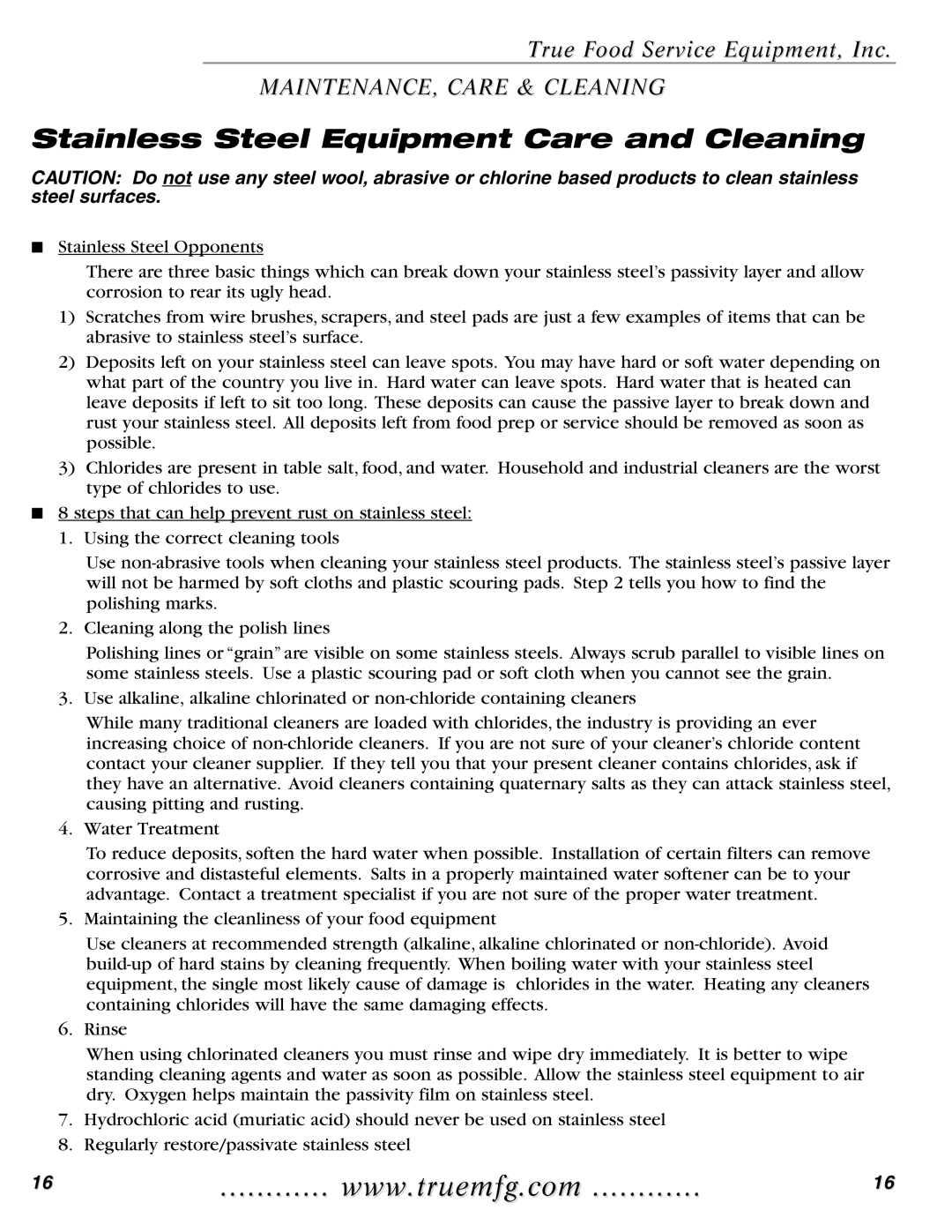GDIM-26, GDIM-26NT, GDIM-49 specifications
True Manufacturing Company is renowned for its commitment to producing high-quality refrigeration equipment, catering to a variety of sectors, including food service and beverage industries. Among its diverse product lineup, the True GDIM-49, GDIM-26NT, and GDIM-26 models stand out for their innovative features, advanced technologies, and exceptional performance.The True GDIM-49 is designed for high-volume businesses, offering an impressive amount of storage space with a capacity of 49 cubic feet. This unit is equipped with energy-efficient, heavy-duty compressors that maintain optimal temperatures, ensuring food safety and freshness. The exterior is constructed from durable stainless steel, providing significant resistance to corrosion and wear, while the interior includes a bright LED lighting system that enhances visibility and improves accessibility to stored items. Additionally, the GDIM-49 features a self-closing door design to prevent unnecessary energy loss.
In contrast, the True GDIM-26NT is tailored for establishments with moderate storage requirements. This model maintains a 26 cubic foot capacity while still embodying the same high standards of quality as its larger counterpart. The GDIM-26NT incorporates advanced refrigeration technology and energy-efficient components, guaranteeing consistent temperature control. One of its standout characteristics is the use of a no-frost evaporator, eliminating the need for manual defrosting and ensuring ease of maintenance over time. The model also features adjustable shelving, allowing users to customize their storage solutions as needed.
Lastly, the True GDIM-26 is similar in size and functionality to the GDIM-26NT but comes without the no-frost feature. This model is perfect for establishments looking for dependable refrigeration without the additional technology, making it a more budget-friendly option. The durable construction and efficient cooling systems in both models guarantee that products remain at optimal temperatures, crucial for food safety.
In summary, True Manufacturing Company’s GDIM-49, GDIM-26NT, and GDIM-26 models represent a fusion of style, functionality, and innovative technology. Businesses can rely on these units for their performance and reliability, confirming True's reputation as a leader in commercial refrigeration. Each model is designed to meet the specific needs of different establishments while maintaining True's hallmark commitment to quality and durability.

